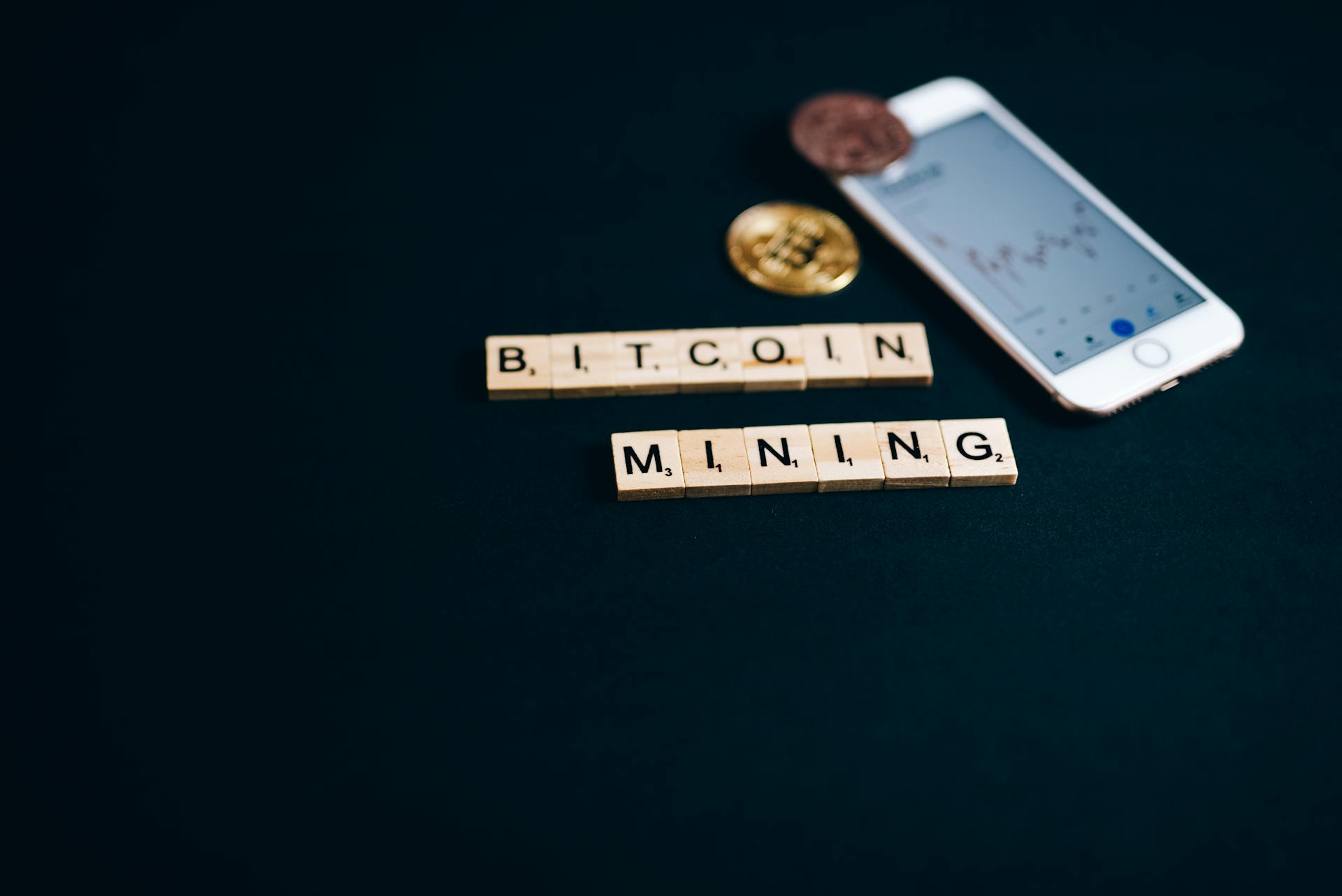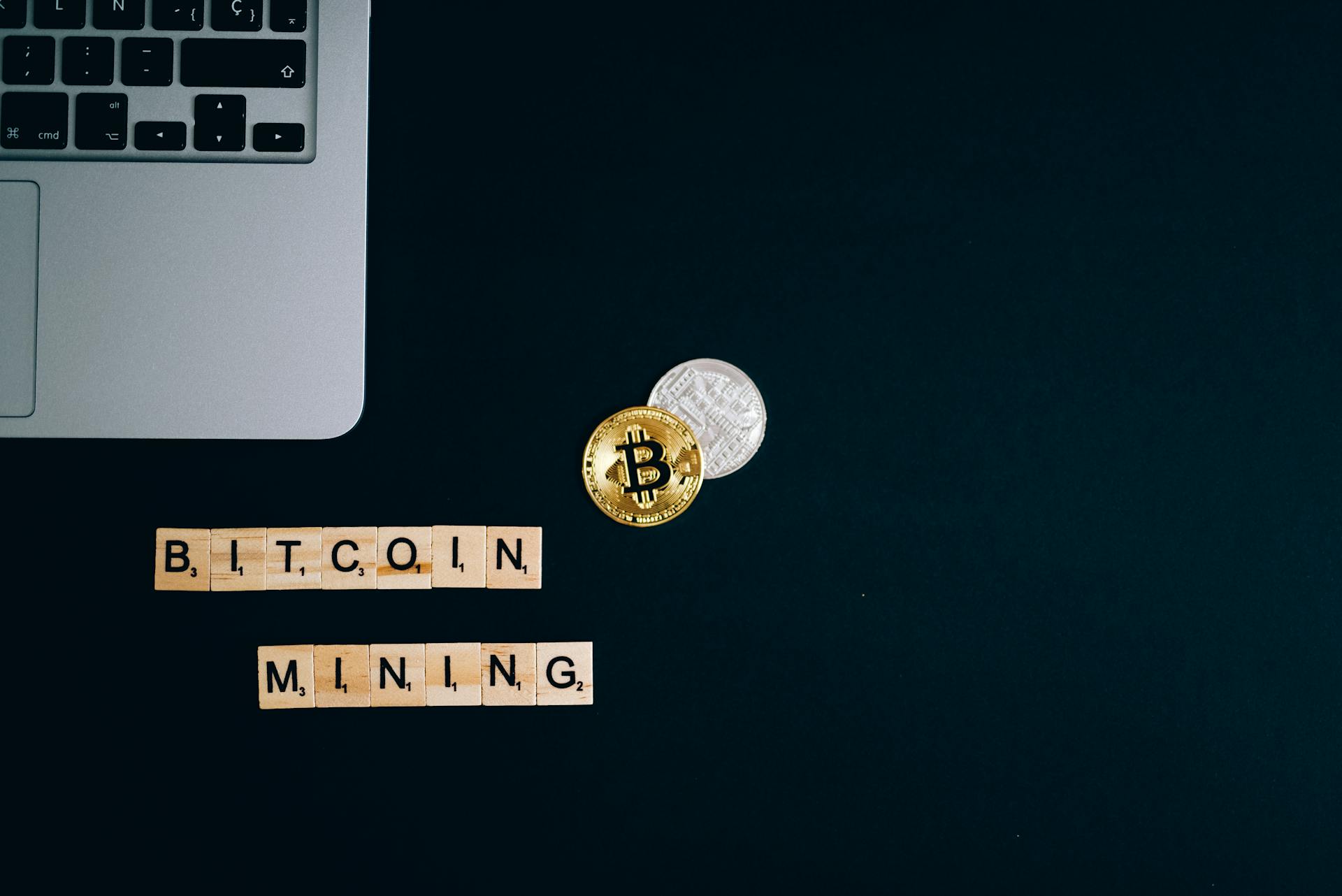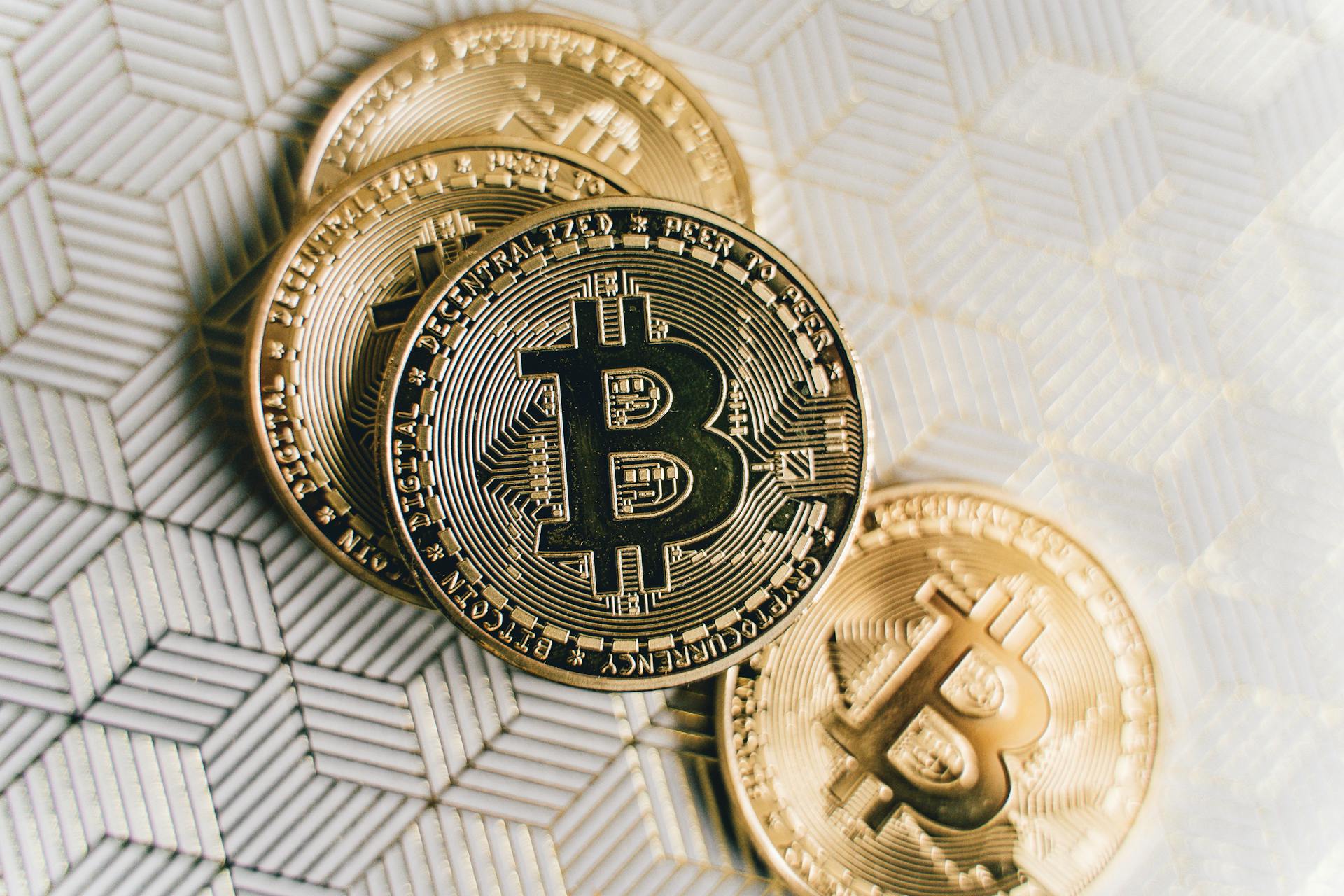
The concept of Bitcoin mining is often misunderstood, but it's a crucial part of the Bitcoin ecosystem. The total supply of Bitcoin is capped at 21 million, and once all of these coins are mined, the process will come to an end.
Mining is the process by which new Bitcoins are added to the circulating supply, and it's done through complex mathematical calculations. These calculations are called "proof-of-work", and they require powerful computers to solve.
As the number of mined Bitcoins approaches 21 million, the reward for solving these calculations will decrease. This is because the total supply of new Bitcoins is halved every 210,000 blocks, or approximately every four years.
You might enjoy: How to Find New Crypto Coins Early
What Happens When All Bitcoins Are Mined
Bitcoin's finite supply of 21 million is a significant concern for miners, as it means their primary incentive, the block reward, will eventually disappear.
Once all 21 million Bitcoins are mined, miners will still be incentivized to continue supporting the network, but their revenue will come mainly from transaction fees.
See what others are reading: 1 Million Bitcoins
Transaction fees currently make up only around 6% of a miner's revenue, but are expected to increase exponentially before the network reaches its supply limit.
Miners will likely transition to relying more heavily on transaction fees, which will become a more significant part of their earnings.
The Bitcoin block reward will become very small, with the 2032 halving reducing it to 0.78125 and the 2036 halving to 0.390625, unless the price of Bitcoin increases significantly.
Even when the block reward is very small, miners will still be collecting rewards in the form of transaction fees, which will continue to incentivize them to support the network.
For your interest: Bitcoin Block Reward
The Impact of a Limited Supply
As Bitcoin's supply limit is reached, miners will continue to charge mining fees to compensate for their expenses.
Mining fees will likely increase to make up for the lack of block rewards, which will only reward miners with the newly mined Bitcoins.
The block reward will eventually be rounded to zero, as any amount less than 1 Satoshi will be rounded to zero.
This means that miners will only be able to earn money through transaction fees, making the network more efficient.
The limited supply of Bitcoin will also make it more valuable, and as a result, goods and services priced in Bitcoin will become cheaper.
The value of each Satoshi, not the total number of Bitcoins, will determine the purchasing power of goods and services.
People will still spend money, but they'll focus on future goods rather than immediate purchases.
Industries that rely on frequent, short-term purchases may be negatively affected, but sectors like tech will thrive on long-term investment.
The total supply of Bitcoin will never reach 21 million, but will continue to approach the limit before halting at a block height of 6,930,000 around the year 2140.
This deflationary nature will encourage saving and long-term thinking, rather than short-term spending.
Readers also liked: Bitcoin Atm Milwaukee - Coinhub
The Future of Mining
Miners will still be incentivized to keep the network running even after all Bitcoin has been mined, thanks to transaction fees.
By 2140, the final Satoshi will be created, but miners will continue to earn user transaction fees, providing a steady income stream.
Miners can also choose to mine other Proof of Work cryptocurrencies like Dogecoin, Bitcoin Cash, Litecoin, Ethereum Classic, and more.
The transition towards transaction fees as the primary incentive for miners will likely happen gradually, as transaction fee returns are expected to increase exponentially before Bitcoin's network reaches its supply limit.
Miners' Future
Miners will continue to be rewarded with new Bitcoins until approximately 2140, when the final Satoshi is created.
The block reward will drop significantly by 2036, making the monetary value of the Bitcoin block reward reduce substantially.
Transaction fees will become a primary source of income for miners, making up around 6% of a miner's revenue currently, but expected to increase exponentially before Bitcoin's network reaches its supply limit.
Here's an interesting read: Block Reward
Miners will still be incentivized to keep the network running after the last Bitcoin is mined due to transaction fee rewards.
The total value of all transaction fees paid to miners is expected to exceed the final block reward between the years 2032 and 2048.
Miners will have the option to mine other Proof of Work cryptocurrencies like Dogecoin, Bitcoin Cash, Litecoin, Ethereum Classic, and more.
Transaction fees will become the main incentive for miners to stay in the network, and the reward system will use just transaction fees after the Bitcoin supply runs dry.
The Bitcoin community will likely have a revised transaction fee process in place by the time the last Bitcoin is mined, ensuring the network remains secure and functional.
You might enjoy: Where Are Bitcoins Mined
Will the Number Ever Reach?
The number of bitcoins is capped at 21 million, but it's unlikely to reach that number due to a quirk in the way block rewards are calculated.
This systematic rounding down occurs when the block reward is divided in half and the new reward amount is calculated in satoshis, the smallest unit of measurement in the Bitcoin network.
After each halving event, the total number of bitcoins issued will fall slightly short of 21 million.
There are 29 more halvings until the final reward of one satoshi is awarded, assuming the halving rate remains at four years.
The final bitcoin is not expected to be generated until 2140, or possibly earlier.
Bitcoin holders can lose access to their bitcoins, such as by losing the private keys to their Bitcoin wallets or passing away without sharing their wallet details.
Up to 20% of the Bitcoin already issued may be permanently lost, according to a June 2020 study by the crypto forensics firm Chainalysis.
A unique perspective: Ripple Labs Wins Final Judgment in Xrp Case against Sec.
The End of Mining
Miners will still be incentivized to support the network long after its supply ends, as they already collect rewards in the form of transaction fees as well as Bitcoins.
The monetary value of the Bitcoin block reward will reduce significantly due to the halving rate, which will drop the figure to 0.78125 in 2032 and 0.390625 in 2036.
Transaction fees are expected to increase exponentially before Bitcoin's network reaches its supply limit, making up a larger portion of a miner's revenue.
Miners Are Mined
The Bitcoin network relies on miners to function, and their main incentive is the Bitcoin rewards they receive.
Miners currently collect rewards in the form of transaction fees as well as Bitcoins, and transaction fees only make up around 6% of a miner's revenue.
The Bitcoin block reward will be halved every four years until all Bitcoins are mined, reducing the monetary value of the reward significantly.
The 2032 halving will reduce the figure to 0.78125, and in 2036 it will drop to 0.390625, making the reward almost negligible.
Miners will still be incentivized to continue supporting the network long after its supply ends because they will still collect rewards in the form of transaction fees.
You might like: How Do You Collect Bitcoins
The rate at which miners are awarded Bitcoins for their work is halved every four years, and this rate will continue until all Bitcoins are mined.
The last Bitcoin won't be mined until around 2140, but quirks of the Bitcoin network mean it will likely end up a few decimal points short of the exact number of 21 million.
Recommended read: Bitcoin Mining Rate
What If Mining Stops?
If mining stops, the Bitcoin network will eventually grind to a halt. For each block to be produced, there must be a consensus among the miners.
No new transactions will be confirmed or added to the blockchain, they'll simply remain stuck in the mempool. Past transaction data, however, can be accessed and viewed as normal.
The global cryptocurrency market capitalization is over $1.5 trillion, with more than 50% being that of Bitcoin. This dominance could send ripples through the space, causing other cryptocurrencies to lose value as well.
The Bottom Line
The Bitcoin ecosystem is still developing, making it possible that Bitcoin itself will continue to evolve over the coming decades.
Once all 21 million coins are mined, a significant impact will be felt by Bitcoin miners, as their revenue will depend entirely on transaction fees.
The price and purchasing power of bitcoin will adjust to the lack of new supply, making it more attractive to investors and users.
The scarcity of Bitcoin will make it more attractive to investors and users, which could have a positive effect on its value.
Here's a summary of what you can expect:
- Miner revenue will depend entirely on transaction fees.
- The price and purchasing power of bitcoin will adjust to the lack of new supply.
- The scarcity of Bitcoin will make it more attractive to investors and users.
Sources
- https://www.investopedia.com/tech/what-happens-bitcoin-after-21-million-mined/
- https://river.com/learn/what-will-happen-after-all-bitcoin-mined/
- https://www.moonpay.com/learn/bitcoin/what-happens-when-21-million-bitcoins-are-mined
- https://www.makeuseof.com/what-happens-to-bitcoin-after-all-21-million-coins-are-mined/
- https://www.lightspark.com/learn/bitcoin/when-all-21-million-bitcoins-are-mined
Featured Images: pexels.com


